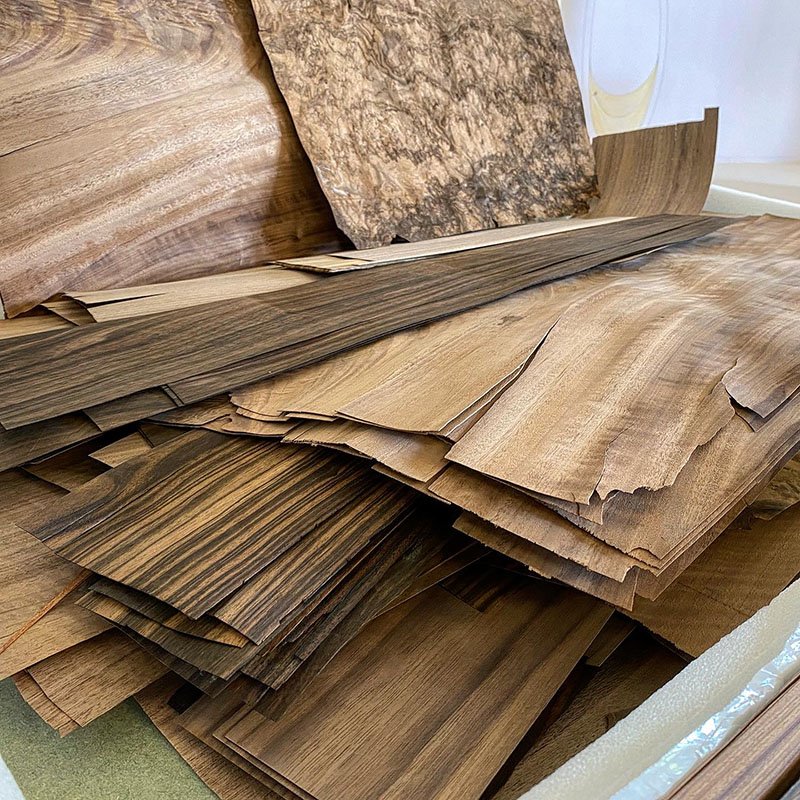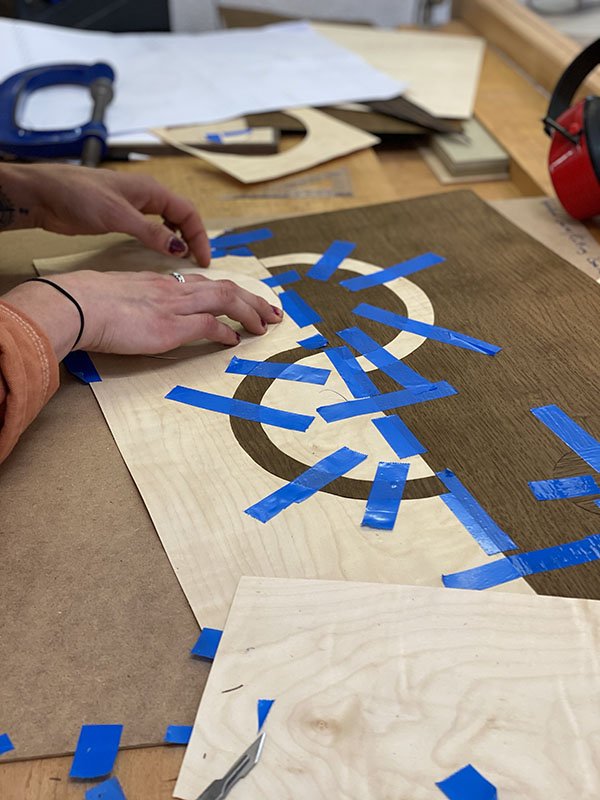Does veneer deserve its bad reputation?


For some there is a stigma surrounding veneer, and a belief that furniture made from it, is something to avoid. This rather unfair perception is often not helped by the adverts we see on television, which can also be unfavourable towards veneer.
The negative associations with veneer started after World War II. Good timber was difficult to obtain and was often expensive. The use of veneer was a cheaper, available alternative. However, the adhesives used for attaching veneer to wood or chipboard was poor at that time and resulted in an inferior performance and finish. Veneer’s reputation was further damaged in the 1970’s, when some cheaply produced veneers meant that it became synonymous with inferior quality.
Very cheap furniture, was also often not even made from wood veneer – but instead a laminate material or paper (foil), a faux surface that contributes to giving real wood veneer it’s bad rap.
Trying to turn that tide of opinion has been hard – I can still hear the advice of my parents ‘Always buy solid, never veneer’ passed down through generations , but lets look instead to the huge benefits and quality that the use of veneer can bring.
On quizzing our tutor Justin about veneer, there are many positive reasons for using it - not least because nowadays the very highest quality logs are sold to veneer merchants.
Veneer merchants have very exacting requirements and look for logs that are uniform in colour, have uniform growth rate, centred pith, no shake or mineral streaks or stains and nominal external defects. A good deal of high end furniture is now made from veneer - partly for the reason that the quality of the wood used for the veneer is of the highest grade, but also for reasons of design, minimal movement and availability of exotic and unusual timbers.
Veneers can also have a specific purpose, i.e. helping to keep a wood panel stable as it can’t move when glued to a substrate.
Solid wood, even kiln dried, is subject to expansion and contraction as the wood continually changes with the amount of relative humidity in the surrounding atmosphere. Wood moves as its moisture content varies, swelling as it absorbs moisture and shrinking as it releases moisture. The grain structure causes wood to move differently in three directions. Wood will move much more across the grain, tangentially along the growth rings; but there will also be some movement in the radial direction, and a very tiny amount longitudinally.
This movement will also happen in veneer, but since veneer is much thinner than solid, the movement is minimal; and the expansion and contraction is limited by the relative smaller mass of the leaves of veneer compared to solid.
In one of the pictures above, you will see a beautiful round Rippled Sycamore and Maple table made by Williams and Cleal – the radial design would be impossible to create in solid wood because the joints would crack open in dry spells and swell tightly shut when damp. Since the veneer used for this table is thin and glued to a substrate, it allows for this design and arrangement of wood, producing a surface that is no longer prone to warping, splitting or seasonal movement.
Working in solid wood is lovely, but it can some times be restrictive in terms of design. Veneer is more forgiving with regards to movement and therefore increases the range of design possibilities.
Veneer also wins environmentally. Choosing veneer rather than timber makes the world’s trees go further, because it’s possible to yield more veneer than timber planks from a log – much more. When we visit our local veneer merchant with the students, Mundy Veneers Ltd, we learn that:
1 cubic metre of timber = 20 square metres of timber
1 cubic metre of veneer = 900 square metres of veneer
This has even greater significance with rare, or endangered wood – such as Macassar Ebony or Rosewood – which would be hard and very expensive to acquire in solid, but more accessible and affordable as veneer.
It’s possible to find many more species of wood in veneer than found in solid, lending furniture makers more variety in their choice of materials. Furthermore veneer merchants who are unable to source a species which is either certified or sustainable, can produce replicas (usually made from Ayous or Poplar), which have been colour stained or processed to look incredibly close to a number of species. Tabu are a company that are leading the field in this area.
Veneers are also essential for special techniques such as book matching and marquetry. This is achieved by using consecutive leaves cut from one log that perfectly book-match. Equally, veneering gives opportunity for generating a pattern in furniture like slip-matches and radial patterns. Diamonds and more complex shapes can also be generated using marquetry and parquetry techniques.
We are advocates of using both high quality veneer and solid wood at Williams and Cleal, and we encourage our students to explore the value of both veneer and solid wood in equal measure. The material that our students choose is thus often dictated by the requirements of each individual design. To see more of our students work, please view our gallery here or for more information on veneer, we recommend visiting www.mundyveneer.com.

